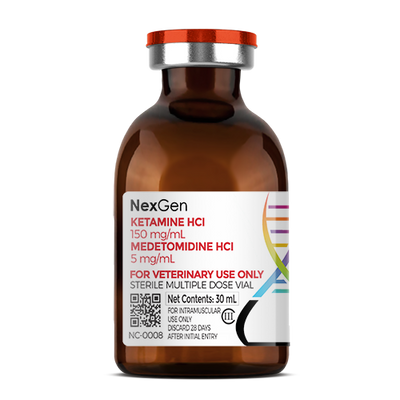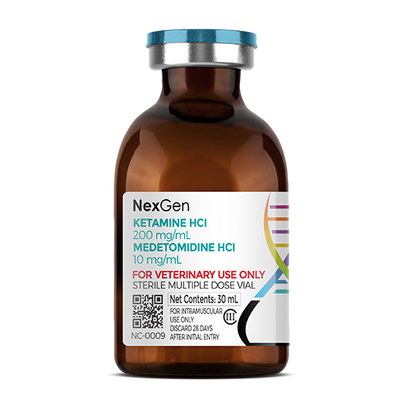
Tolazoline HCl 100 mg/mL, Injectable Solution, 30mL
Login for pricing
- Brand
- Mixlab
- SKU:
- NC-0103
- Product Type:
- Injectable
- Size:
- 100ml
Tolazoline HCl belongs to the synthetic group of α-adrenergic blocking agents known as the imidazoline derivatives. It will reverse the analgesic effects of α-agonists. Tolazoline antagonizes the effects of detomidine more completely, hastens recovery, and lasts longer than atipamezole.1
Tolazoline is a vasodilator that has direct actions on blood vessels and also increases cardiac output. It can interact to some degree with histamine, adrenergic, and cholinergic receptors, but the mechanisms of its therapeutic effects are not clear. Tolazoline’s mechanism of action is by means of a direct effect on peripheral vascular smooth muscle and indirect effects produced, in part, by release of endogenous histamine. It has moderate α-adrenergic blocking activity and has histamine agonist activity. Tolazoline usually reduces pulmonary arterial pressure and vascular resistance. In humans, it is used in treatment of persistent pulmonary hypertension of the newborn.2
Effects of Tolazoline
Tolazoline is fast-acting (usually within 5 minutes of IV administration), but may not fully reverse effects on sedation or heart rate and rhythm. Its duration of action is relatively short, occasionally requiring repeat doses.2 In horses that received detomidine (0.04 mg/kg sublingual) then tolazoline (4 mg/kg IV) 1 hour later, tolazoline’s effect on detomidine-induced changes in chin-to-ground distance were minimal; detomidine-induced changes in heart rate and rhythm only persisted for 15 to 20 minutes.4
After tolazoline doses of 4 mg/kg IV in horses, average heart rate decreased beginning 2 minutes postinjection, with heart rate nadir at 45 minutes. No apparent effect on chin-to-ground distance was noted. Packed cell volume significantly increased in all horses throughout the times sampled, with the maximal change at 15 minutes. Serum glucose concentrations increased significantly in all horses at the first time point measured through 1.5 hours postinjection.5
One 2013 study investigated the pharmacokinetics and pharmacodynamic effects of tolazoline when administered as a sole agent. Nine healthy adult horses were administered tolazoline (4 mg/kg IV) and blood samples were collected at time 0 (prior to drug administration) and at various times up to 72 h post drug administration. Plasma samples were analyzed using liquid chromatography–mass spectrometry and resulting data analyzed using compartmental analysis.6
The study found that systemic clearance, steady state volume of distribution and terminal elimination half-life were 0.820 ± 0.182 L/h/kg, 1.68 ± 0.379 L/kg and 2.69 ± 0.212 h, respectively. Tolazoline administration had no effect on chin to ground distance, but the heart rate decreased (relative to baseline) and the percentage of atrial–ventricular block increased in all horses within 2 min of administration. Packed cell volume and glucose concentrations were also increased throughout the sampling period.6
Where to buy Tolazoline
Tolazoline is available in the U.S. through several pharmaceutical manufacturers and through veterinary custom compounding companies.
FOR RX ONLY: A valid prescription from a licensed veterinarian is required for dispensing this medication.
1Zeiler GE. A review of clinical approaches to antagonism of alpha(2)-adrenoreceptor agonists in the horse. Equine Veterinary Education. 2015;27(1):48-54.
4Knych HK, Stanley SD. Effects of three antagonists on selected pharmacodynamic effects of sublingually administered detomidine in the horse. Vet Anaesth Analg. 2014;41(1):36-47.
5Casbeer C, Knych HK. Pharmacokinetics and pharmacodynamic effects of tolazoline following intravenous administration to horses. Vet J. 2013;196(3):504-509.
6Casbeera, H.C., Knychab, H.K. Pharmacokinetics and pharmacodynamic effects of tolazoline following intravenous administration to horses. The Veterinary Journal, Volume 196, Issue 3, June 2013, Pages 504-509.




















